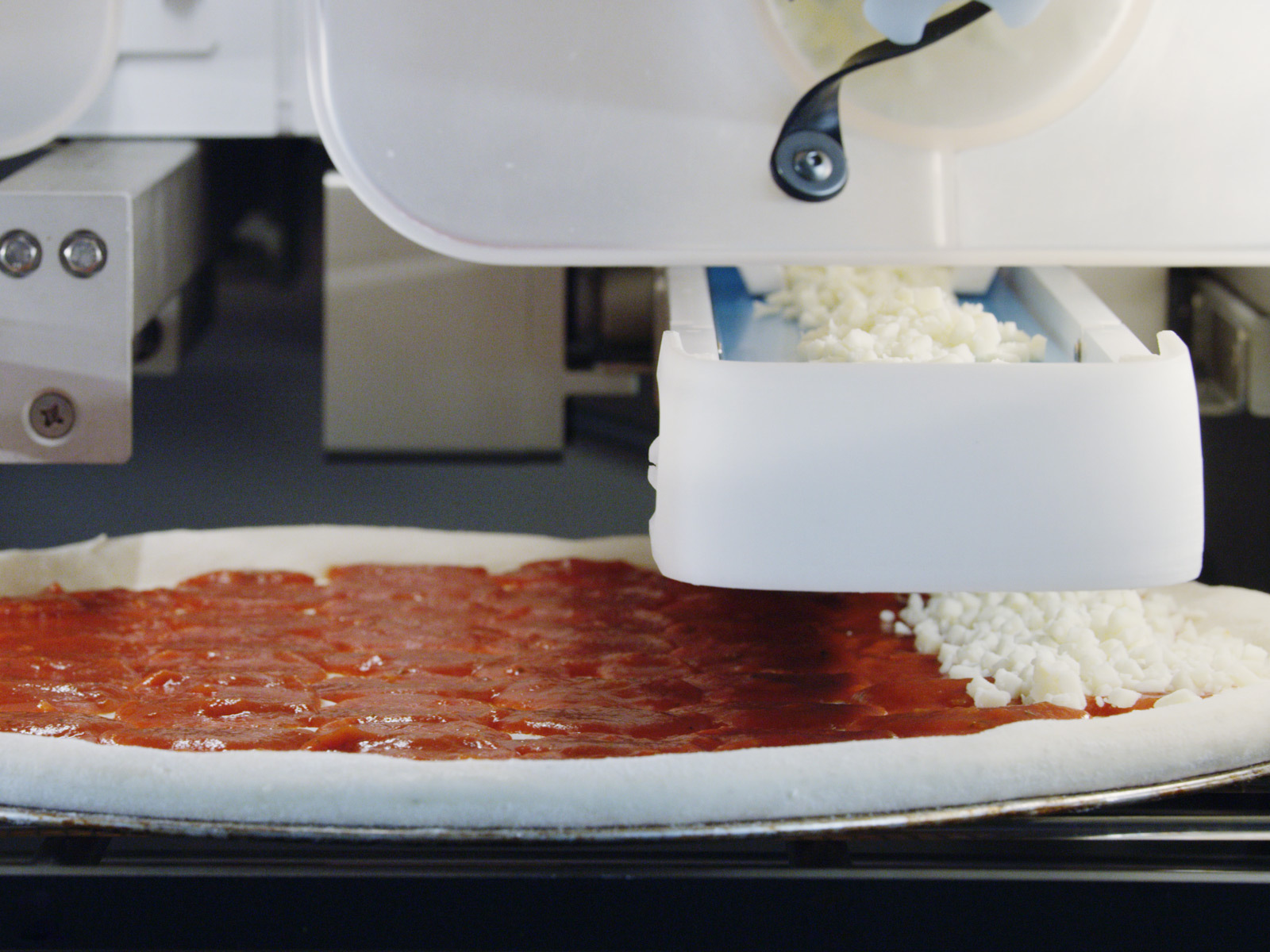Technology
Picnic’s pizza-making robot is now available. Do chefs need it?

A company has started selling its pizza-making robot to restaurants. Now it has to convince chefs it’s worth the money.
Last week, Seattle-based Picnic announced that it’s now accepting pre-orders for its pizza-assembling robot. The announcement happened at the International Pizza Expo in Las Vegas, an annual gathering of more than 13,000 pizza professionals.

#pizzatech
Credit: picnic
The “Pizza System” consists of a collection of modules that dispense sauce, cheese, and toppings onto dough. According to a press release, the cost of leasing the machine “ranges from $3,500 to $5,000 per month including free installation and maintenance,” and that with the Pizza System, a single person can make up to 100 pizzas in an hour.
While Picnic’s robot isn’t new (it debuted in 2019,) it’s newly available to restaurants. Picnic ran successful pilot programs with T-Mobile Park and the Las Vegas Convention Center. But both are large venues that need to produce fast food for the masses. A local pizza joint has very different demands.
“I would never use that machine because I’m creating a dining experience,” wrote Paulie Giannone, owner of Paulie Gee’s, in an email while also at the Pizza Expo. Giannone, better known as “Paulie Gee,” started out cooking pizzas in an outdoor oven he built at his house in New Jersey. He now has seven pizzerias that serve pies with fun names like the “Ricotta Be Kiddin’ Me” and “Grapeful Dead.”

Paulie Gee’s is just as much about personal connection as it is about pizza.
Credit: Paulie Gee’s
For Giannone, a human touch is what creates a personal connection with his customers, and a machine would take away from that.
“My restaurants are not a business to me, they are my life pretty much,” he said.
Others saw more practical problems.
“I would say that the least amount of problems that a pizza place has is topping pizza,” said Matthew Hyland, executive chef and co-owner of New York City restaurants Emily and Emmy Squared. From Hyland’s perspective, topping pizzas was never really a problem that needed to be solved in the first place.
He’d be more interested in a robot that had more sophisticated skills.
“Replacing skilled labor like stretching the pie, that would definitely be more helpful,” he said.
Along the same lines, Zak Fishman, owner of Prime Pizza in Los Angeles, doesn’t see much added value. He said he didn’t see anything in the Pizza System video that made him think “that this would be better than having a human.”
When it comes to working in a kitchen, what matters most to Daniel Cutler, chef and owner of Ronan in Los Angeles, is versatility.
“If you’re pigeon-holed, you can only do one job, you’re less valuable than everyone else,” Cutler said. He also mentioned how his customers like the experience of watching the pizza being made, and called the Pizza System “a big eyesore.”

Chef Daniel Cutler of Ronan says customers like watching their pizzas being made by hand.
Credit: ronan
According to Cutler’s co-owner and wife Caitlin, Ronan would pay around $2,400 a month to hire a line cook to do the same job. So it actually costs more money to lease the Pizza System — almost double, in fact.
In an email, Clayton Wood, CEO of Picnic, addressed the pricing model.
“Our customers have indicated that the labor savings, reduced food waste savings, consistency of product, and ongoing support justify the monthly fee,” he said.
Wood also pointed out that because of its RaaS (robot as a service) business model, there’s not an upfront cost for the system.

A robot that stretches dough would be more helpful for Chef Matthew Hyland.
Credit: Evan sung / emily pizza
Despite what these chefs had to say about it, Picnic says interest in the robot has been strong.
“From individual pizzeria owners and regional chains to large-scale managed food services and corporations, customers repeatedly saw the benefits that the Picnic Pizza System could have on their store’s bottom line,” said Wood.
The company said it would reveal some its customers “in the coming months.”
-

 Entertainment7 days ago
Entertainment7 days agoEarth’s mini moon could be a chunk of the big moon, scientists say
-

 Entertainment7 days ago
Entertainment7 days agoThe space station is leaking. Why it hasn’t imperiled the mission.
-

 Entertainment6 days ago
Entertainment6 days ago‘Dune: Prophecy’ review: The Bene Gesserit shine in this sci-fi showstopper
-

 Entertainment5 days ago
Entertainment5 days agoBlack Friday 2024: The greatest early deals in Australia – live now
-

 Entertainment4 days ago
Entertainment4 days agoHow to watch ‘Smile 2’ at home: When is it streaming?
-

 Entertainment3 days ago
Entertainment3 days ago‘Wicked’ review: Ariana Grande and Cynthia Erivo aspire to movie musical magic
-

 Entertainment2 days ago
Entertainment2 days agoA24 is selling chocolate now. But what would their films actually taste like?
-

 Entertainment3 days ago
Entertainment3 days agoNew teen video-viewing guidelines: What you should know
















